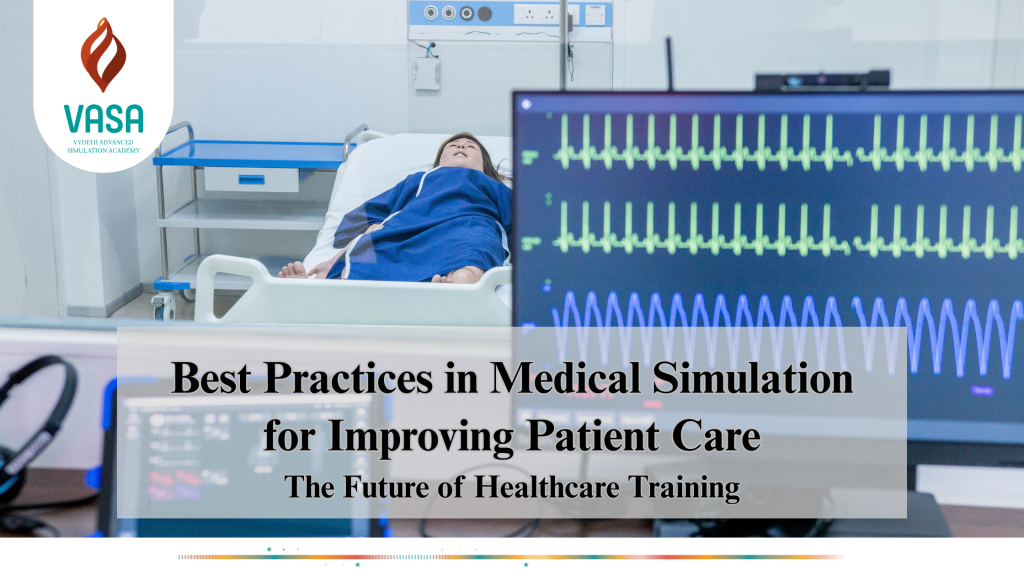In today’s rapidly evolving healthcare landscape, ensuring the highest standards of patient care and safety is paramount. With technology advancing at lightning speed, one of the most transformative methods being used to improve clinical outcomes is medical simulation. It plays a crucial role in shaping healthcare professionals’ skills and knowledge, enhancing patient safety, and ensuring better clinical outcomes.
At the forefront of medical simulation, healthcare institutions are now embracing peer-to-peer simulation in healthcare, hospital-based simulation, and simulation-based clinical skills training. These innovative approaches are revolutionizing the way healthcare professionals learn, collaborate, and provide care to patients. Among the leaders in this transformation is VASA (Vydehi Advanced Simulation Academy), a dedicated center for simulation-based medical education that stands as a pioneering facility in Southeast Asia. But how exactly does medical simulation improve patient care, and what are the best practices to ensure its effectiveness? Let’s dive in.
What is Medical Simulation and Why Is It Crucial for Patient Safety?
Medical simulation involves the use of virtual reality (VR), augmented reality (AR), mannequins, and other interactive technologies to replicate clinical scenarios. This allows healthcare professionals—ranging from doctors and nurses to paramedics and technicians—to practice critical procedures in a controlled, risk-free environment before performing them on real patients.
The integration of simulation-based clinical skills helps improve patient safety by allowing practitioners to refine their technical skills, rehearse high-risk procedures, and respond to emergencies without compromising patient well-being. According to studies, simulation-based training has been shown to improve state of patient safety and quality improvement by providing healthcare workers with hands-on experience in managing complex medical situations. VASA contributes to this goal by offering a highly structured environment where healthcare professionals can simulate real-time emergencies, trauma cases, and multidisciplinary interventions with precision.
Best Practices for Medical Simulation to Improve Patient Care
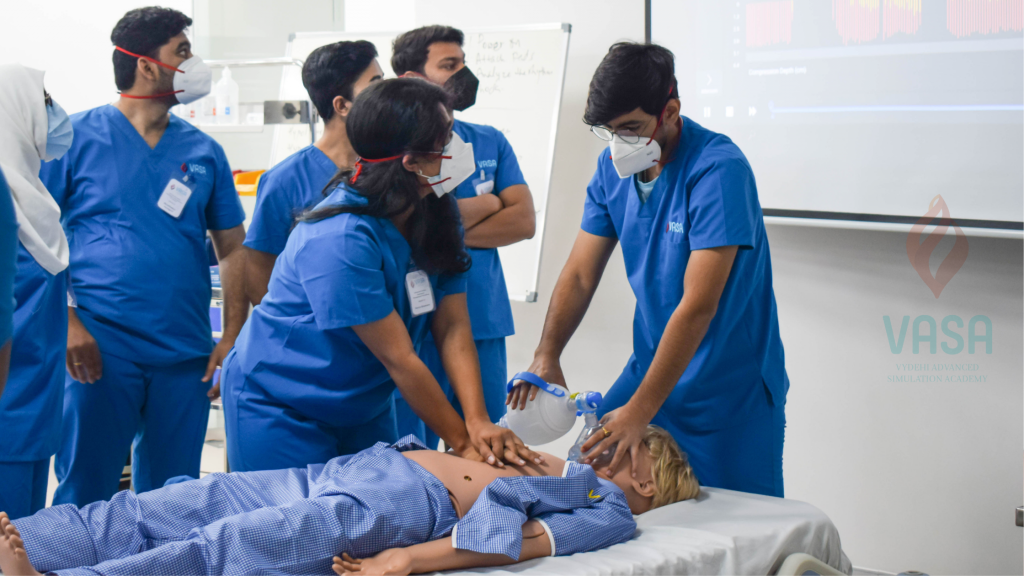
1. Embracing Peer-to-Peer Simulation in Healthcare
Peer-to-peer simulation in healthcare is a powerful tool for fostering collaborative learning. By engaging healthcare professionals at different experience levels in a simulated environment, peer-to-peer training can improve communication, teamwork, and leadership skills. These training sessions are often more impactful because they involve real-time feedback and reflection, allowing participants to learn from each other’s experiences.
Studies have shown that peer-based learning enhances the understanding of medical concepts, particularly in high-pressure environments like emergency rooms or intensive care units (ICUs). According to a study published by The American Journal of Surgery, peer-to-peer simulation has been shown to improve both the performance of medical teams and the overall care provided to patients. At VASA, peer-to-peer simulations are integrated into every module, encouraging interdisciplinary collaboration among medical students, nurses, and clinical staff—mirroring the dynamics of actual hospital settings.
2. Hospital-Based Simulation for Real-World Applications
Hospital-based simulation brings the benefits of medical training directly into healthcare settings. These simulations replicate real-world clinical situations and are customized to reflect the specific challenges and procedures that hospital staff might encounter daily. For example, emergency response teams can practice trauma care, while obstetric teams can simulate labor and delivery scenarios.
The key advantage of hospital-based simulation is that it bridges the gap between theoretical knowledge and real-world practice. By training healthcare professionals in the same setting where they will be providing care, hospitals ensure that their staff is well-prepared to handle emergencies, improve decision-making, and reduce medical errors. Research has consistently shown that hospitals utilizing simulation-based training experience enhanced patient care and safety standards.
VASA collaborates closely with Vydehi Hospital to provide on-site, hospital-based simulations that reflect real-time workflows and protocols, further enhancing readiness and clinical accuracy among its trainees.
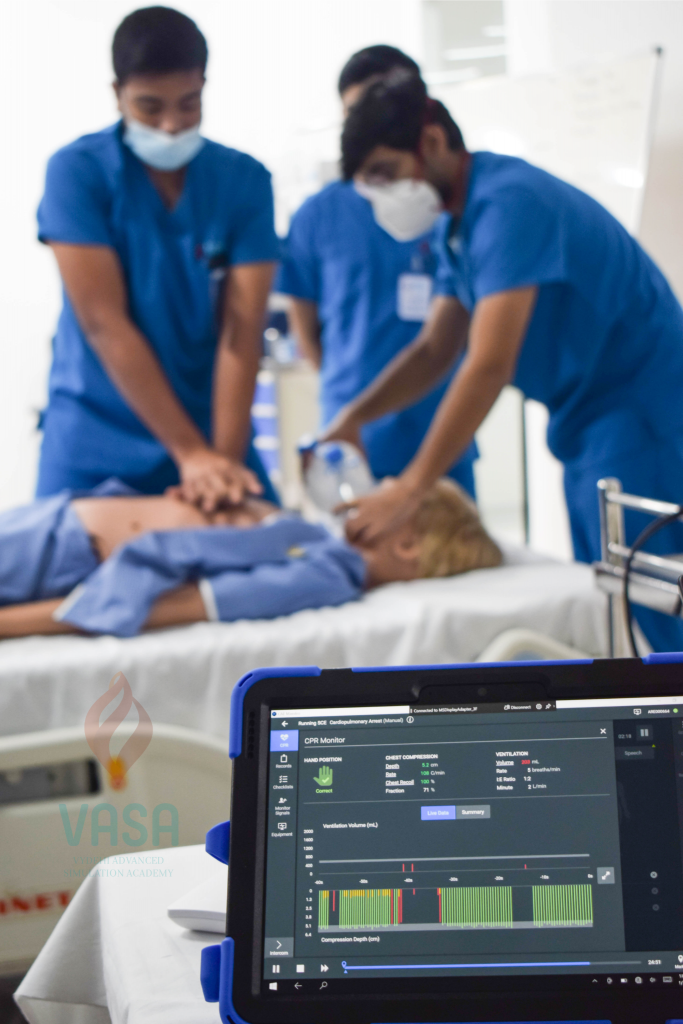
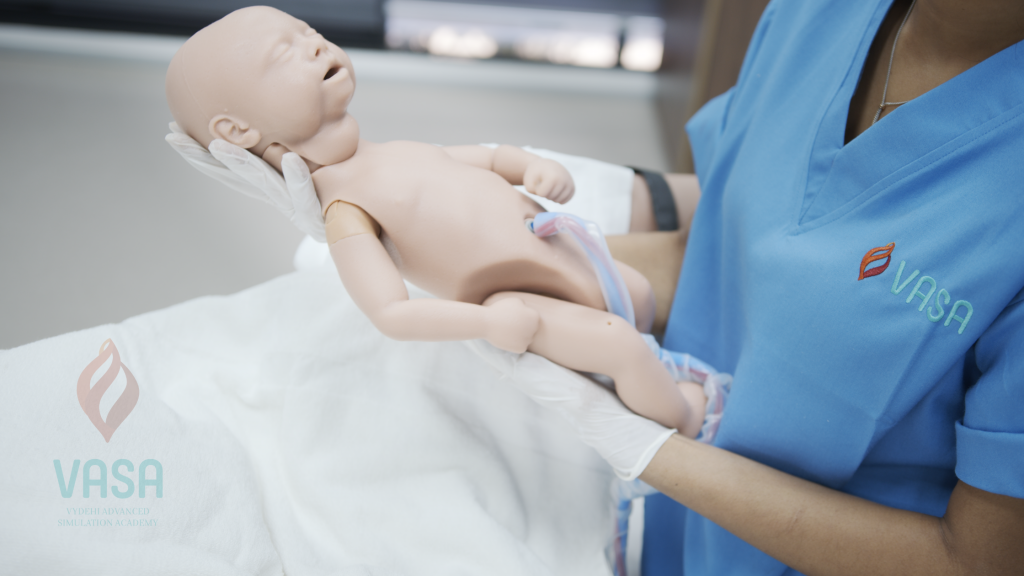
3. Simulation-Based Clinical Skills: A Path to Mastery
In clinical practice, mastering hands-on skills is essential for providing safe and effective care. Simulation-based clinical skills training allows healthcare providers to repeatedly practice procedures such as catheter insertion, airway management, or surgical techniques without putting patients at risk.
By using high-fidelity simulators or low-cost alternatives like task trainers, professionals can hone their technical expertise and confidence in handling intricate medical procedures. Moreover, these simulations offer instant feedback, helping practitioners identify areas for improvement and make necessary adjustments before performing on actual patients.
Hospitals around the world are now leveraging simulation-based clinical skills to ensure their staff is proficient in critical procedures. For instance, VASA Medical Simulation Center in Southeast Asia has incorporated both VR and AR technology into its curriculum, enhancing clinical skills training with immersive, hands-on experience. VASA’s specialized training modules in anesthesia, pediatrics, cardiology, and surgery ensure that healthcare workers can perform complex procedures with greater precision, ultimately improving patient outcomes.
4. Leveraging Technology for Cutting-Edge Training
One of the best practices in medical simulation is the integration of cutting-edge technologies such as virtual reality (VR), augmented reality (AR), and artificial intelligence (AI). These technologies provide an immersive learning experience that traditional methods simply cannot match. VR and AR simulations allow healthcare professionals to experience real-life scenarios in a risk-free, controlled environment.
For instance, AR can overlay crucial information during surgery or allow for guided diagnostic imaging, ensuring that healthcare professionals can make better-informed decisions during treatment. AI-driven simulations can evaluate the decisions made by healthcare providers in real time, providing invaluable feedback to enhance skills.
The use of state-of-the-art simulation technologies aligns with the latest trends in medical education. According to a study by The National Institutes of Health (NIH), technology-enhanced simulations improve the efficacy of training and lead to better patient outcomes by increasing accuracy and confidence in clinical tasks. VASA has adopted a blended learning model that incorporates AI-based simulation assessments and virtual case walkthroughs, offering a future-ready learning experience for both students and seasoned healthcare professionals.

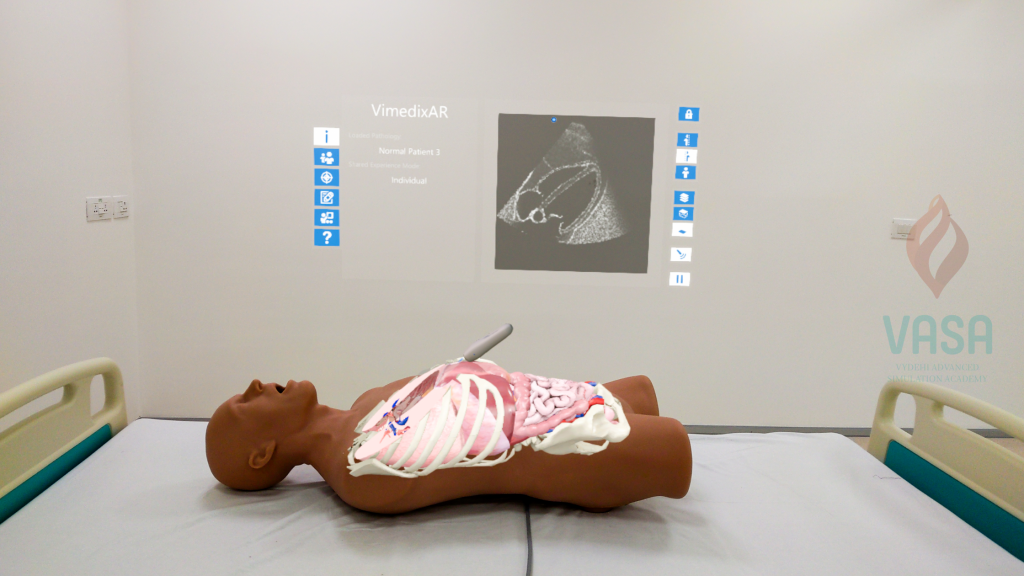
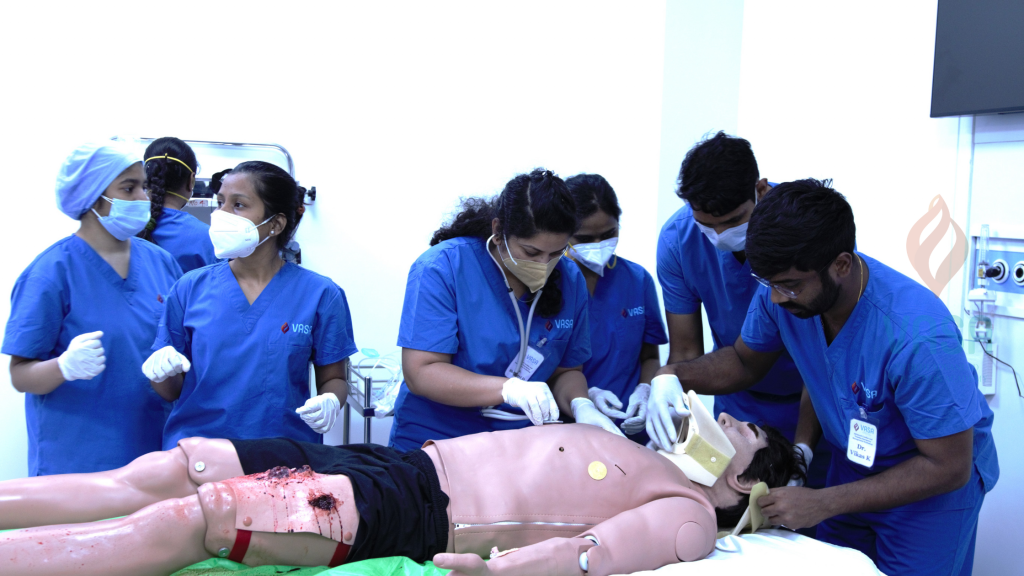
5. Continuous Assessment and Quality Improvement
To maximize the benefits of medical simulation, continuous assessment and evaluation are essential. A structured feedback loop helps identify areas where healthcare professionals need further development. Whether through self-assessment, peer evaluation, or instructor feedback, regular performance reviews are key to maintaining high standards in medical training.
Additionally, the data gathered from simulation-based training can be used to monitor the state of patient safety and quality improvement. By tracking progress and identifying trends in skill development, hospitals can tailor training programs to meet the evolving needs of their teams and ensure that care standards remain high.
Hospitals can also assess the effectiveness of simulation training programs by measuring outcomes such as reduced medical errors, improved patient satisfaction, and faster recovery times. VASA employs a rigorous evaluation system where learning outcomes are measured through scenario-based performance metrics and video-based feedback, ensuring consistent improvement across training cohorts.
The Future of Medical Simulation: A Step Toward Safer Healthcare
The future of medical simulation is bright, with new technologies continually improving the way healthcare professionals are trained. The integration of peer-to-peer simulation, hospital-based simulation, and simulation-based clinical skills is helping to create a culture of continuous learning and improvement. This is crucial in the effort to reduce medical errors and enhance patient safety.
By embracing these best practices, healthcare organizations can ensure their staff is not only proficient in clinical skills but also capable of delivering the best possible care to their patients. Centers like VASA are setting the benchmark for how future healthcare training should be delivered—immersive, data-driven, and aligned with real-world medical demands. As patient safety remains a top priority, the continued evolution of medical simulation will play a pivotal role in shaping the future of healthcare training and ultimately improving patient outcomes.
Conclusion
Medical simulation has proven to be a game-changer in enhancing the quality of patient care. Through innovative techniques like peer-to-peer simulation in healthcare, hospital-based simulation, and simulation-based clinical skills training, healthcare professionals are better equipped to provide safe, high-quality care to patients. With the ongoing advancements in technology, the future of medical simulation is bound to bring even more impactful changes to the healthcare industry. Institutions like VASA exemplify how simulation can be strategically deployed to transform medical education and elevate patient care to global standards.




